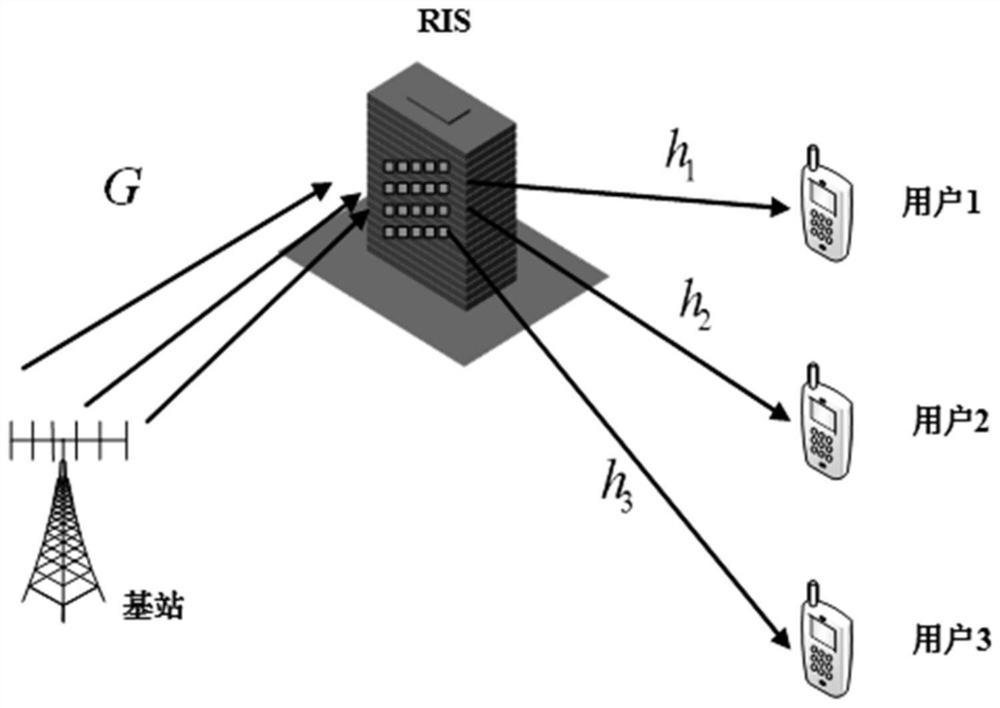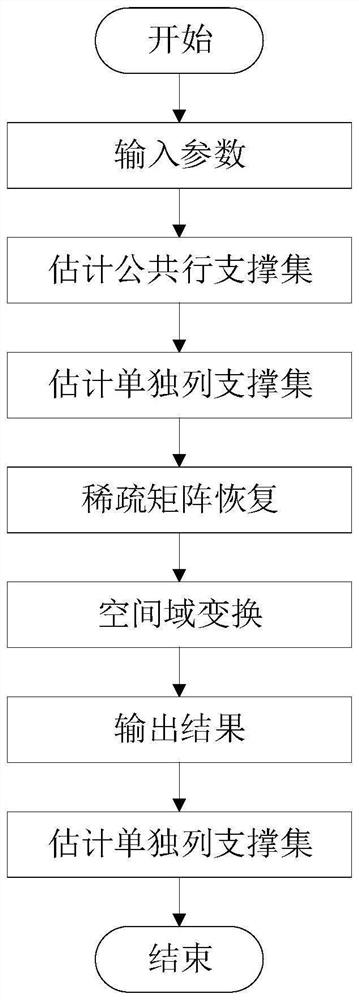Channel estimation method of RIS auxiliary millimeter wave system based on compressed sensing
A channel estimation and compressed sensing technology, which is applied in baseband system components, transmission systems, radio transmission systems, etc., can solve the problems of large pilot overhead, high time cost, and low computational complexity, so as to improve estimation performance and estimate Accuracy, reduced computational complexity, good effect of pilot overhead
- Summary
- Abstract
- Description
- Claims
- Application Information
AI Technical Summary
Problems solved by technology
Method used
Image
Examples
Embodiment
[0050] First, the present invention considers a RIS-assisted millimeter-wave massive MIMO uplink channel estimation problem, and proposes a channel estimation method based on compressed sensing for RIS-assisted millimeter-wave systems, and establishes a communication system model based on the Saleh-Valenzuela channel model, such as figure 1 Shown:
[0051] Indicates the BS-RIS channel;
[0052] k=(1,2,...,K) indicates the channel from RIS to the kth user;
[0053] is the phase shift matrix of RIS.
[0054] The multi-antenna base station sends a pilot signal with known information, and then transmits it to multiple single-antenna users with the assistance of RIS, then the received signal matrix of the kth user can be expressed as:
[0055] the y k (t)=GΘh k the s k (t)+w k (t)
[0056] Second, the base station-RIS channel and RIS-user channel are represented as a concatenated channel, since diag(θ(t))h k =diag(h k )θ(t), so the concatenated channel matrix Expres...
PUM
 Login to View More
Login to View More Abstract
Description
Claims
Application Information
 Login to View More
Login to View More - R&D
- Intellectual Property
- Life Sciences
- Materials
- Tech Scout
- Unparalleled Data Quality
- Higher Quality Content
- 60% Fewer Hallucinations
Browse by: Latest US Patents, China's latest patents, Technical Efficacy Thesaurus, Application Domain, Technology Topic, Popular Technical Reports.
© 2025 PatSnap. All rights reserved.Legal|Privacy policy|Modern Slavery Act Transparency Statement|Sitemap|About US| Contact US: help@patsnap.com



